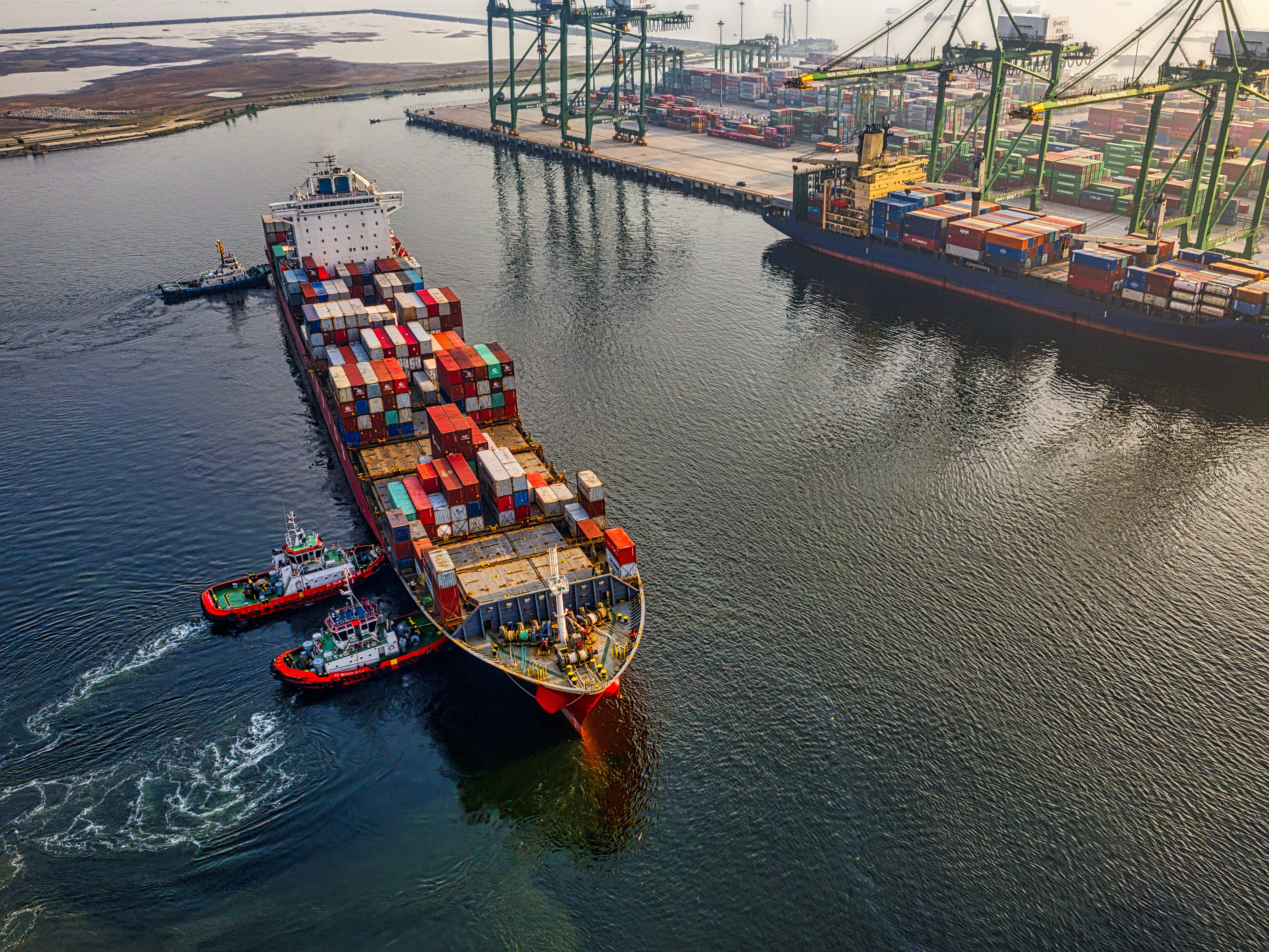
Many observers in the global supply chain and logistics industries are eagerly awaiting a restabilization of supply and demand. But it’s time to bust the myth of a “return to normal.”
The long tail of the pandemic, record inflation and soaring fuel prices have reshaped the global transportation landscape. Now, with the war in Ukraine shuttering key east-west intercontinental train, road and air routes, along with the closure of the largest port in China for the second time in two years, one thing is abundantly clear: Disruption, regardless of the cause, is here to stay for the foreseeable future.
Nevertheless, action is needed now. It’s time to abandon the lingering survival mode strategies of 2020, as well as the rollercoaster of reactive strategies that many companies have adopted since then to try and sidestep the next hurdle that comes their way.
Uncertainty is certain, and every logistics executive needs to adopt a proactive, planned end game of strategies and goals, along with the tools and data to achieve them. The pressure to do so is greater than ever. We’re way beyond a global supply chain that’s simply strained. Every executive charged with course-correcting around steep budget overages from the past two years is also now facing mandated requirements for faster shipping, better environmental controls and an overall reduction in cost to serve.
The time is now to put new controls in place. There’s a need to develop connected, end-to-end visibility, with oversight of goods in transit and the multitude of variables that impact performance and cost.
Optimizing for Success
Traditionally, a business will optimize transportation and logistics for either performance or cost. The first involves investing finite resources, personnel, funding and time into strategic decisions and technologies that help to guarantee fast, reliable and on-time shipping and deliveries. But the bottom line suffers. When we optimize around cost instead, the opposite happens, and we run a tight, efficient fiscal ship that requires tradeoffs through selection of lower-cost carriers and longer shipment times, which can impact a company’s perceived reputation with customers over time.
Both strategies have pros and cons, but which is right for your business, as market factors continue to flux? Only connected, end-to-end visibility can provide the data-backed answers needed to make informed decisions that affect everything from profitability to financial reporting responsibilities, and even long-term company value.
To create end-to-end visibility, it’s essential to achieve two things. First is a true understanding of the financial flow of your goods around the globe. It’s important not only to assess both historical and current costs, but also to use that knowledge to more accurately predict and plan for future cost efficiencies. In other words, are we meeting budget and goals, or are variables like fuel costs and accessorial charges creating unexpected variances by geography, port or mode? If so, how can we use end-to-end cost visibility to develop operational strategies to mitigate some of these variances?
Second, we must gain a real-time picture of goods in transit anywhere in the world, at any time. Which product lines are shipping, by which mode, and where are charges creating the biggest negative impact? What is the status of inventory in all warehouses and DCs, and can we afford to continue running just-in-time practices, or is a shift to just-in-case stocking required? Which carrier partners and routes are delivering against plan, and do they need to adapt in any way to improve performance or reduce risk?
Achieving this 360-degree view of goods and cost isn’t easy, but it’s no longer optional. Transitioning to this approach is essential for gaining control in a chaotic landscape, as well as for creating a truly informative picture of cost versus performance on a daily, weekly, monthly, quarterly and annual basis.
Adopting a Dual Mindset
As market conditions continue to unfold, it’s vital that logistics executives adopt a dual mindset, one that seamlessly embraces both performance management strategies and cost-control and mitigation measures. When planning for performance and budgeting for cost, companies can better understand which products may be time-critical or require strict carrier handling requirements, versus commodity items that can be shipped with lower-cost options.
The first step in this dual process is taking a comprehensive view of how current events, macro factors and evolving market conditions will impact both operational performance and the cost to deliver it.
Gasoline has topped $7 per gallon in some parts of the U.S. Road and air freight rates, which were already high, will rise further. Route closures and challenges will play an increasingly impactful role in driving up further pricing increases and challenging operations. The air routes over Ukraine, once preferred to those of Russia, are effectively unflyable, shifting air freight routes over the North Pole at greater risk and increased cost. Meanwhile, the Shenzhen Yantian port closure in China will likely produce a bullwhip effect in U.S. ports later in the year. That means new backlogs of containers and ships, as well as intensified challenges for trucks getting in and out to keep goods flowing by road.
All of this is happening at a time when carrier availability remains highly constrained, and pandemic-era driver shortages continue. Expect increased carrier demand and a resulting price hike amid climbing global inflation (estimated to be 8.4% just last month) which is rapidly spreading throughout the global supply chain. The point is simply this: Evolving market conditions will continue to challenge both performance and cost, and the only way to manage the impact is to optimize for both versus.
Creating End-to-End Visibility
With 2020 hindsight, we would all have enacted these strategic changes as soon as the road started getting rocky two years ago. And while we can continue to dwell on the many variables and factors that have shaped market conditions and challenges, it’s important to stop reflecting and act now. That means taking the following steps:
Re-imagining physical flow visibility. It’s no longer enough to know when your goods left the warehouse on the journey from A to B, or when they arrived. Shippers need total visibility of the flow of goods, in order to make rapid and fluid operational decisions. Those that managed to achieve this over the past two years have been the ones that fared the best, reacting in near-real time to disruptions. More critically, they were able to stay agile by embracing relatively low-impact technology, instead of suffering through a lengthy and costly revision of global supply chain operations. Worldwide powerhouse shippers such as General Mills and Nestlé are leading the charge to adopt the technology needed to gain data-driven insights into the flow of goods.
Integrating financial flow visibility. Gaining visibility over the worldwide flow of goods is only half of the solution to managing difficult conditions. There’s also a need to build in financial data tracking and analysis that can answer critical questions in challenging times. Did rates escalate beyond plan? Did partners deliver against contracted rates and agreements? Did shipments sit at congested ports accruing additional charges? In some instances, accessorial charges are now making up more than half the total cost of net shipping charges. According to Accenture, since 2020, 75% of companies report negative or worse financial impact from transportation challenges driven by supply chain disruption. Another 55% indicate they’ll be downgrading their growth plans in the next two years as a direct result of these kinds of factors. Understanding all of this will help carriers to map current challenges and make improvements going forward.
Creating Resiliency and Choice
Visibility for the sake of improved performance and cost management is incredibly helpful, but the real end game for every organization must be creating air-tight resilience to the external market factors that impede business success. True oversight across all performance metrics and cost factors builds a data-driven, organization-wide understanding of which performance-enhancement strategies and cost controls deliver better return on investment. Gartner calls such capability “the imperative of all supply chain leaders in 2022.”
For shippers that adopt these strategies, resilience means choice. High-quality data collected across the operation delivers confidence in, and executive support for, the many decisions required to combat challenging market conditions.
Every organization right now is in problem-solving mode. Could there be a different network mix? Better production choices or more diversified distribution? Could materials be sourced locally, or could storage and warehousing changes mitigate cost? But if your executive team does anything in 2022, put these broad-ranging initiatives to one side. Focus instead on immediate, achievable action. Build and commit to connected, end-to-end visibility across every factor of performance and cost. Doing so won’t just create a better understanding of your total cost to serve; it will deliver improved cash flow, greater revenues and, over time, a war chest to protect against whatever lies beyond the next horizon in the years ahead.
Josh Bouk is president of Trax Technologies.

.jpg?height=100&t=1714138927&width=150)





